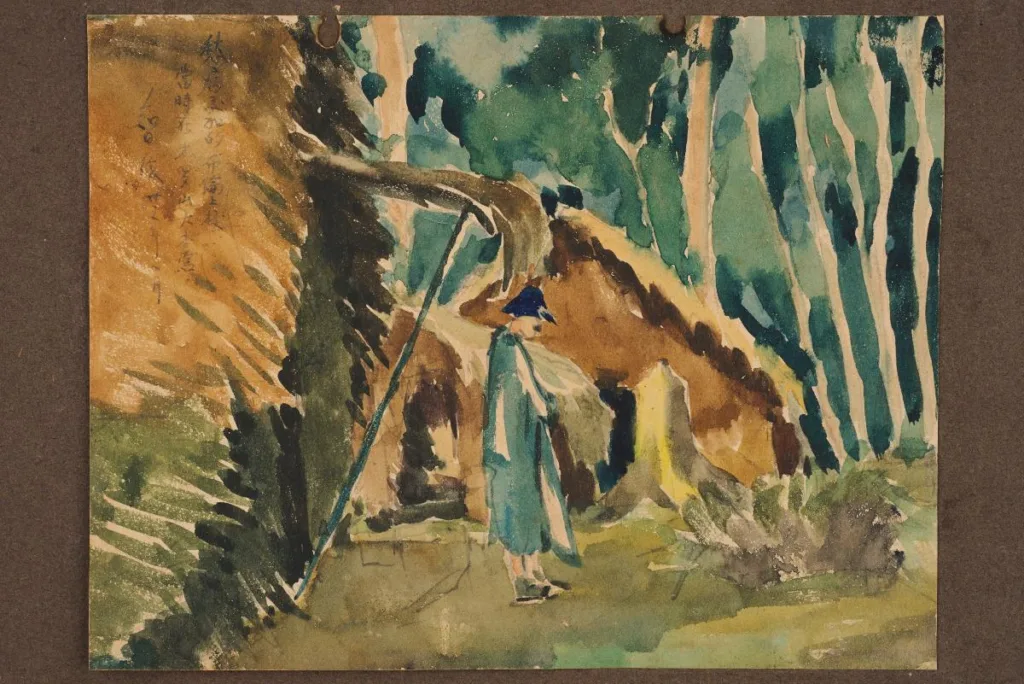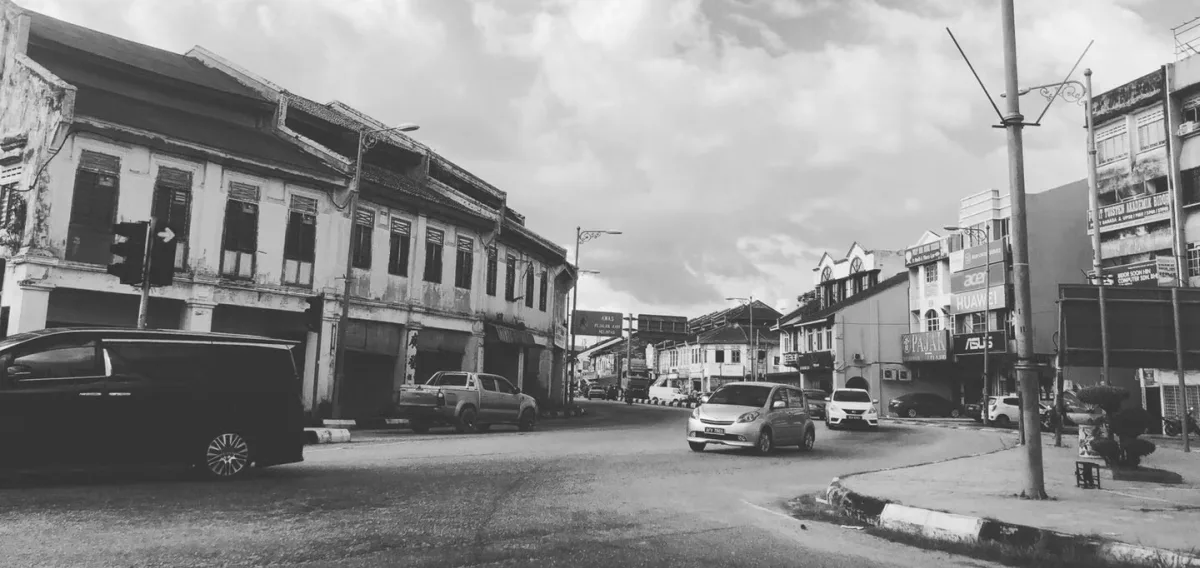Bidor county was located in the Hindu kingdom of Gangga Negara, which was centered in Beruas. Bidor was part of the Hindu-Buddhist-influenced Gangga Negara Kingdom believed to have existed around 900 years ago under the administration of the Beruas Kingdom.

This influence can be seen in the discovery of an Avalokitesvara statue with eight arms made of bronze in Bidor in 1936 during tin mining explorations, which is now stored in the National Museum.
Bidor is said to have existed since the rule of Sultan Sallehuddin Shah (Raja Kobat), the 9th Sultan of Perak who ruled the state of Perak from 1630 to 1636.
Bidor has become a settlement for Malays, mostly from West Sumatra of Rao descent, who migrated here via the Telok Anson (Teluk Intan) port and followed the Perak and Bidor rivers, opening up new settlement areas along the river. Here they and their families settled and some also married the local residents of Bidor at that time.
The first person to be appointed as the headman of Bidor was Syeikh Abdul Ghani and it is believed that he was also the first settler in the Bidor area. He was from Sumatra and since then the Malay community of Rao descent has expanded.
The first Malay settlement in Bidor was in a village known as Kampung Gedong. The settlement was eventually abandoned as they opened a new settlement on the outskirts of the town along the riverbank starting in the early 1940s.
In its heyday, Bidor was one of the largest and most active tin-mining areas in the state of Perak attracting many Chinese of Hakka and Cantonese descent to migrate from the coastal lines to the inland to flee the Chinese triad wars.
Due to the booming mining activities, the history and origin of the name Bidor are said to come from a tin measuring tool made of wood that was widely used in the trade at that time. This measuring tool was also used as currency in Perak.

It is estimated that each Bidor tin contained approximately 70 catty of tin. 1 catty is equivalent to 604 grams, so 70 catty or 1 Bidor is equivalent to 42 kilograms.
There was also a small port called Tongkah Harbour where tin from mining activities was brought to be sent to the port of Telok Anson via small boats and transferred to larger ships and sent to Singapore. In the 1950s, mining activities were booming in the Kinta and Larut regions. Bidor was not immune to the impact of these mining activities and the town of Bidor continued to grow over time.
The port activity stopped when the advancement of land transportation took over the river route and the Bidor river flow was also relocated from its original flow due to mining activities. As a result, Tongkah Harbour was abandoned day by day. The remnants of Tongkah Harbour can still be seen around the Bidor Clinic area, and the workers’ port boarding house (dock) still stands firm and the house number is written with the series TH, meaning Tongkah Harbour.
This was also the fate of the mining activity because the price of the world tin market fell causing the operators to not be able to endure, and the lack of new areas for mining also became the cause of the closure of this mining activity. Although the dredging activity ended, there are still remnants such as the workers’ association that has changed status to become a location at 4th Mile, Jalan Telok Intan for its former workers. This place was previously known as Bidor Malayan Tin (BMT), with its last activity in the late 1970s. Now many of these former mining areas have been turned into housing and well-planned villages.
From tin mining, rubber planting was also opened by the British at the time, attracting Indians of Tamil descent to migrate to Bidor.
During World War II in 1941, Bidor was not immune to the effects of the war. There were also battles between British troops, MPAJA and the Japanese Imperial Army.
Bidor had a close connection to the Battle of Kampar during the Japanese army’s southern advancement toward Kuala Lumpur. On December 29, 1941, the 501 Battery fled from Kampar and withdrew to Bidor. The column was once again targeted by dive bombs and machine-gun fire just south of Dipang, resulting in five wounded soldiers.

Blantan Hill (Bukit Belantan), located 7 miles from Bidor was chosen by Col. John Davis who represents the Supreme Allied Commander, Admiral Lord Louis Mountbatten, who had just established the Head Office (HO) of Force 136. Blantan Hill was exposed after one of the spies of the allied forces was captured and tortured by the Japanese. The hill was heavily bombed by the Japanese air force, and the HO was destroyed. The Orang Asli played a key role in evacuating the operatives deep in the jungle.
After the defeat of Japan in 1946, the British re-entered Malaya, leading to a power struggle between the Communist Party of Malaya and the British government that leads to the communist insurgency period called the ’emergency’.
The British Commissioner in Malaya at that time directed his representative to place the Chinese who lived scattered in new settlements in special resettlement camps for security purposes.
The resettlement camps in Bidor were like Kampung Baharu Tanah Mas, Kampung Baharu Pekan Pasir, Kampung Baharu Bidor, Kampung Baharu Bidor Stesen, Kampung Baharu Coldstream, and Kampung Baharu Kuala Bikam.

They were placed in one area and were monitored by Special Constable (SC) and Home Guard forces.
During the emergency, the British army suffered a few casualties in Bidor. On July 18, 1948, Captain A.R. Pickin from the 7th Duke of Edinburgh’s Own Gurkha Rifles lost his life while engaging in a gunfight after a CT camp was exposed by Gurkha scouts.
On the following October 2, 1948, Captain D.G. Lock, attached to 4 Platoon ‘B’ Company K.O.Y.L.I was ambushed and killed while bathing in a jungle pool near Bidor along with L/Cpl. K. Hutchinson, Pte. A. Dobson and Pte. H. Woodhouse.
In the 1950s, GHQ 26th Gurkha Infantry Brigade and the 95 Independent Field Battery of the Royal Artillery consisting of “Charlie Troop,” “Dog Troop,” and “Command Troop” were stationed in Bidor to combat communist insurgency.
The people of Bidor also fought for independence from the British and opposed the Malayan Union before Malaysia (then Malaya). There were also residents of Bidor who were detained by the British administration at that time and placed under the security act, including the late Allahyarham Arshad bin Shaari.
Post-independence, Bidor was under the control of the local Royal Malaysian Police 3rd Battalion General Operations Forces (previously known as the Police Field Force). This unit was famous for its elite Senoi Praaq unit, which was made up of Orang Asli (indigenous people) skilled in tracking.
The last “black area” in Bidor, Gepai Falls, was finally opened to the public in 1989 after the Malaysian government signed a treaty with the Malayan Communist Party.
Bidor is primarily an industrial region. If you travel north of Bidor, you will see vast stretches of lush greenery on both sides of the main road, consisting of guava, oil palm, and rubber plantations.
While these plantations contribute to the town’s economy, the town used to derive significant income from travelers who stopped by to sample the town’s famous local cuisine and agricultural products.
Before the North-South Expressway was built, travelers were forced to pass through the town via the main federal road. As the town was renowned for its diverse food options, many travelers chose to take a break and grab a bite at one of the local eateries before continuing their journey.
Bidor was also famous for its extraction of Kaolinite (a type of clay) in the past.

Bidor is located 68 kilometers from Ipoh and 138 kilometers from Kuala Lumpur by road, using Federal Route 1, which passes through the town. The city is also served by the North-South Expressway Northern Route 130. Although the KTM Intercity does not pass directly through Bidor, the nearest railway stations are Tapah Road and Sungkai stations.
